Three
THE NETHERLAND PLAZA
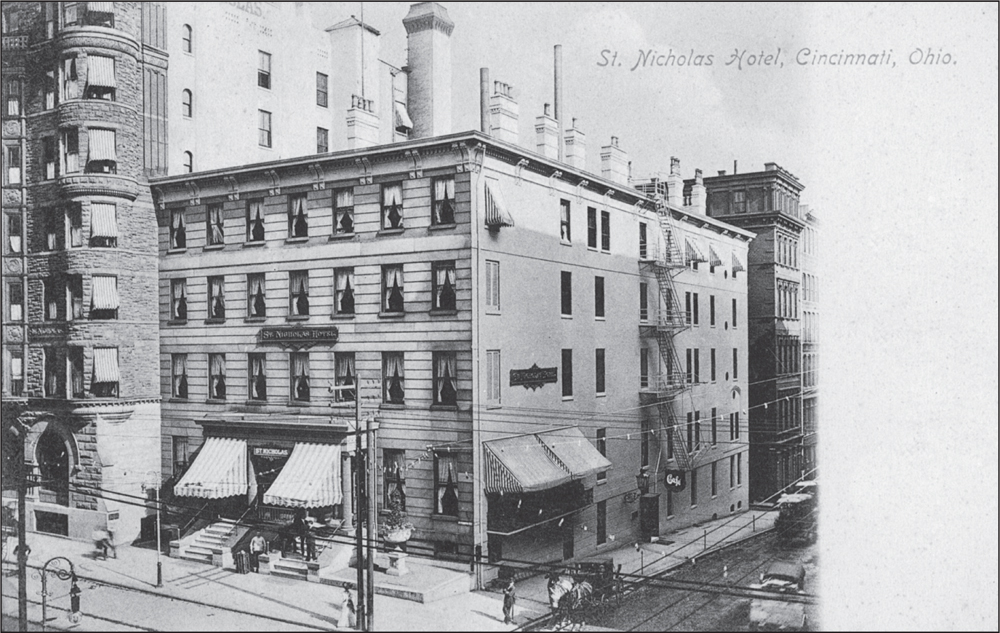
Since opening in 1865, the Queen City’s most luxurious inn was the tiny St. Nicholas Hotel on Fourth and Race Streets. When it closed in 1911, the prestigious name was quickly purchased by the Hotel Sinton. This led to a heated legal battle with the owners of the newly constructed Netherland Plaza, who originally intended to use the St. Nicholas name. (Courtesy of the Public Library of Cincinnati and Hamilton County.)

While everyone is familiar with the Art Moderne Union Terminal, there is a second great Art Deco treasure in the Queen City: the elegant Hilton Netherland Plaza hotel. An integral part of the Carew Tower complex, this hidden gem is located in the very center of downtown, right across the street from Fountain Square. The Netherland has been a part of Cincinnati history for more than 80 years. Those who enter—either as visitors from other cities, people attending a meeting or a wedding reception, or to have a fine meal in one of the restaurants—the Netherland are transported into a world of elegance and style. Seen here is French Art Deco in its most mesmerizing form. The visitor will experience a spellbinding display of design, from classical murals on the ceiling to Modernistic fixtures on the lights and railings. If the other guests were not looking at smart phones, one would expect to see F. Scott Fitzgerald in a tuxedo walking by to have dinner in Orchids. (Courtesy of the Hilton Netherland Plaza.)
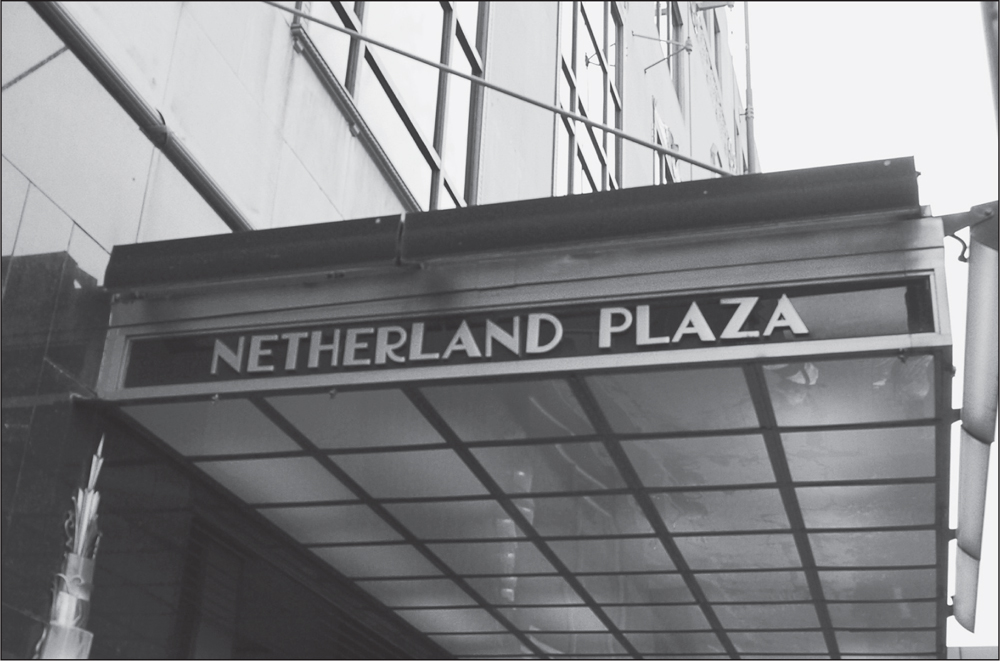
The Netherland was the brainchild of one of Cincinnati’s most notable residents, John Emery. His grandfather, Thomas, arrived in Cincinnati in 1832 and sold candles made from the by-products of the stockyards. In 1926, he married Irene Gibson, daughter of the artist who created the famous Gibson girl. (Photograph by Jordan Rolfes.)
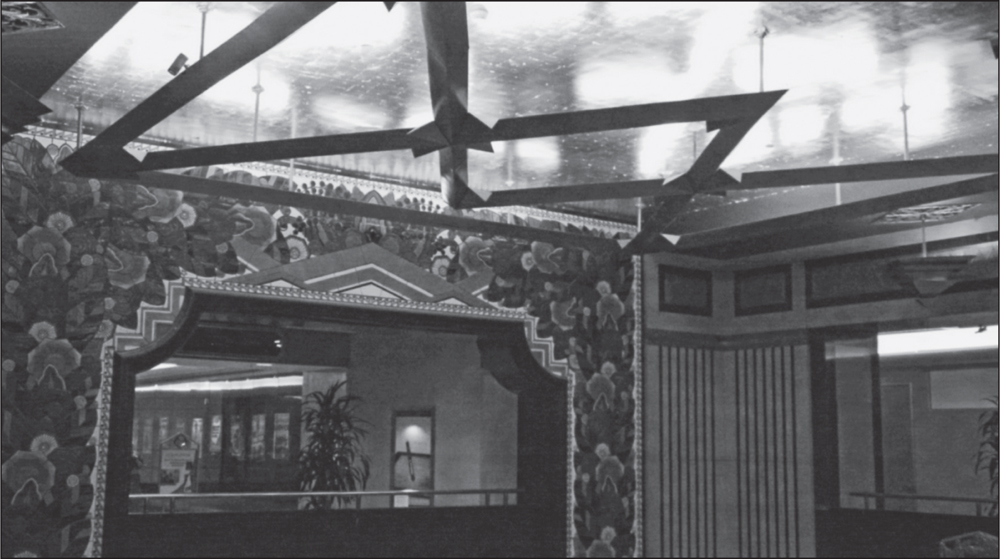
In 1929, Emery approached the banks to request funding for the Carew Tower skyscraper and the Netherland Hotel. The bankers refused the loan. This was not a smart thing to do to a man like Emery. In defiance, he sold his fortune in stocks to fund the project. Soon afterwards, the stock market crashed. Had Emery not made the move, his wealth would have been worthless. (Photograph by Jordan Rolfes.).
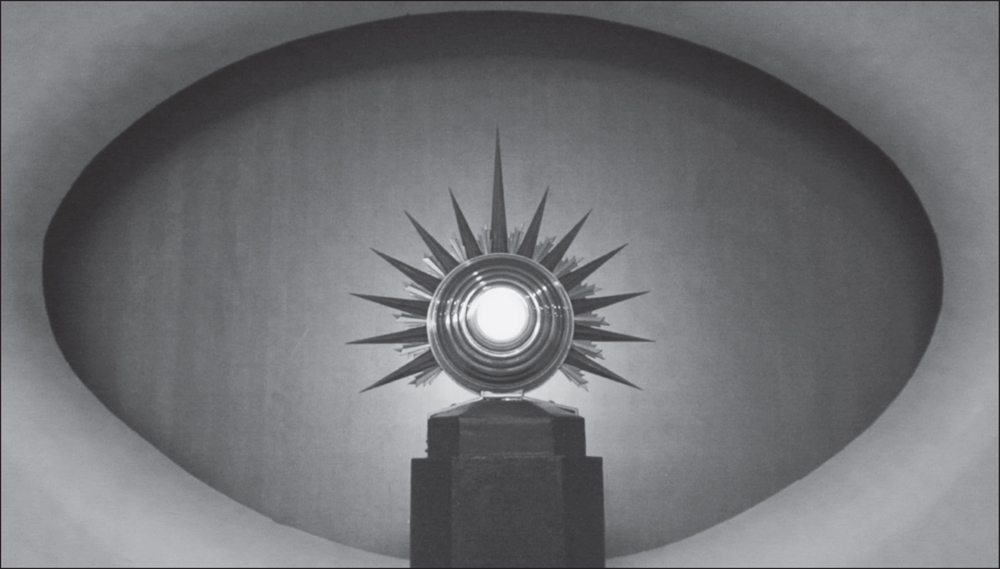
The hotel abounds in unusual and Modernist art, sometimes bordering on the surreal. There is a curious tale as to how the Netherland received its rather dreamlike name. The Netherland Plaza actually opened in 1931 without a name. When the St. Nicholas Hotel on Fourth Street closed, the nearby Hotel Sinton quietly purchased the rights to the name. Emery wished to use the coveted St. Nicholas title and spent a fortune having the insignia branded on napkins and silverware. This was stopped by legal action from the Sinton. The Starrett Investing Company had already spent thousands of dollars purchasing napkins and silverware monogrammed “SNP” none of which could now be used. Rather than throw away the expensive material, the “SNP” became the Starrett Netherland Plaza. The “nether” in the new name came from the fact that the hotel was in the middle space between the Ohio River and the surrounding hillsides. In truth, it is in the middle of the downtown area, halfway between the river and the Over-the-Rhine neighborhood. (Photograph by Jordan Rolfes.)
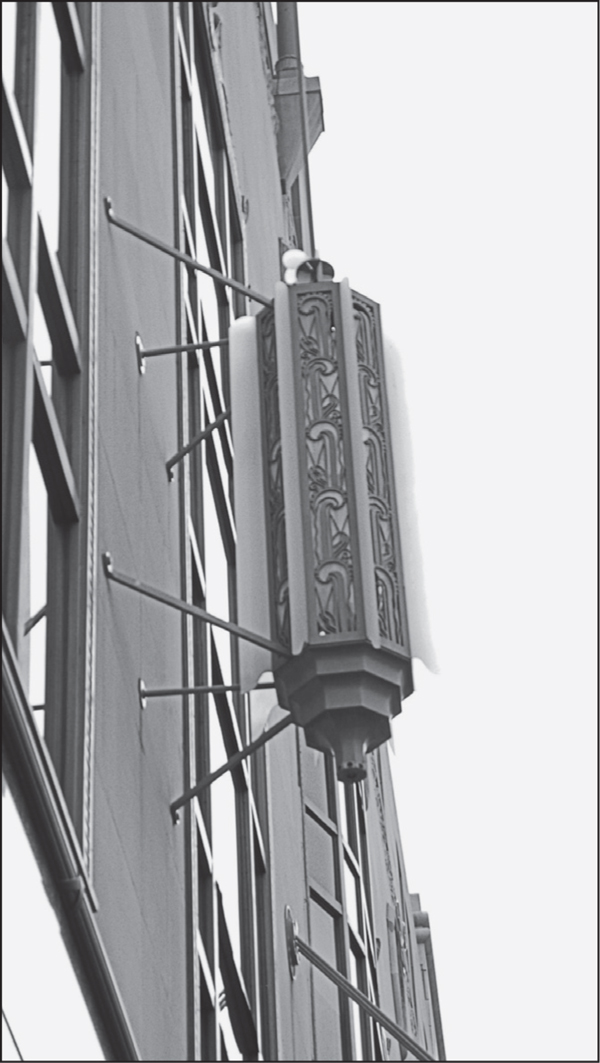
John Emery wanted only the best for his new hotel. He hired two of the finest architects available for the massive project. Col. William Starrett’s work was already well known, from the Classical Revival Lincoln Memorial to the massive Art Deco Empire State Building. Fellow designer Walter W. Ahlschlager created Chicago’s Hotel Intercontinental and the opulent Peabody Hotel in Memphis, Tennessee. (Photograph by Jordan Rolfes.)
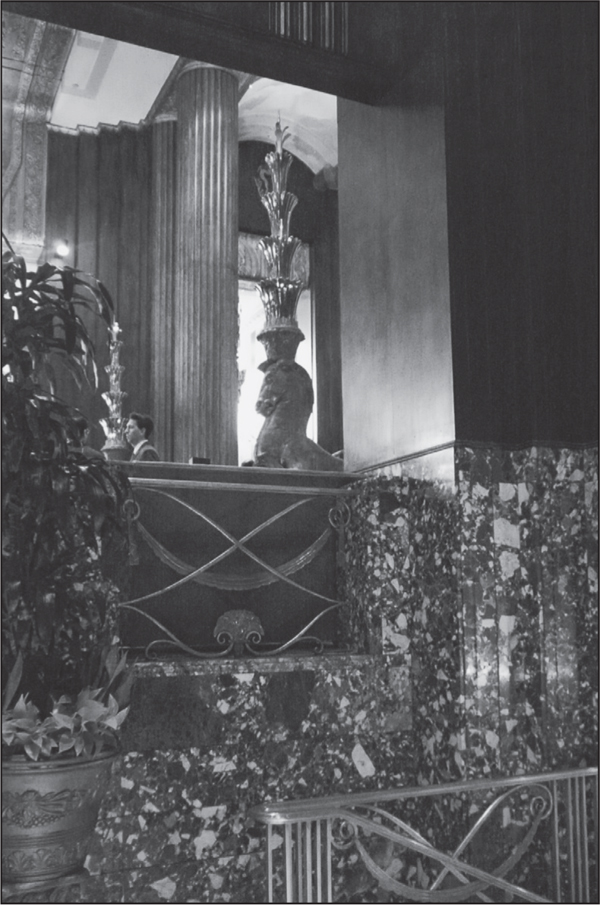
Located in what was once the tallest skyscraper in Cincinnati, the Netherland is 29 stories tall, offering more than 600 rooms for visitors to the Queen City. When the Netherland Plaza opened in 1931, the Times-Star proclaimed it to be as magnificent as “the splendors of Solomon’s temple.” (Photograph by Jordan Rolfes.)
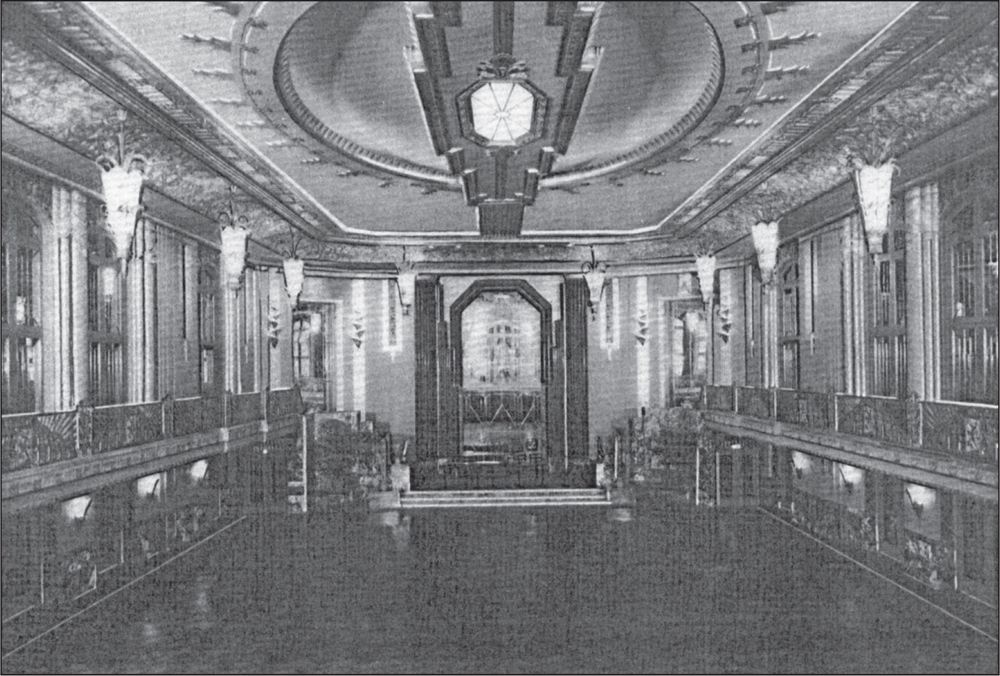
Guests at the Netherland Plaza were given a luxurious booklet describing the amenities of the hotel. No doubt over the years, many of these brochures became treasured keepsakes as reminders of a young bride’s big day and the hotel the new couple stayed in. This is one of the many photographs in the booklet. (Courtesy of the Cincinnati Museum Center, Cincinnati Historical Society Library.)
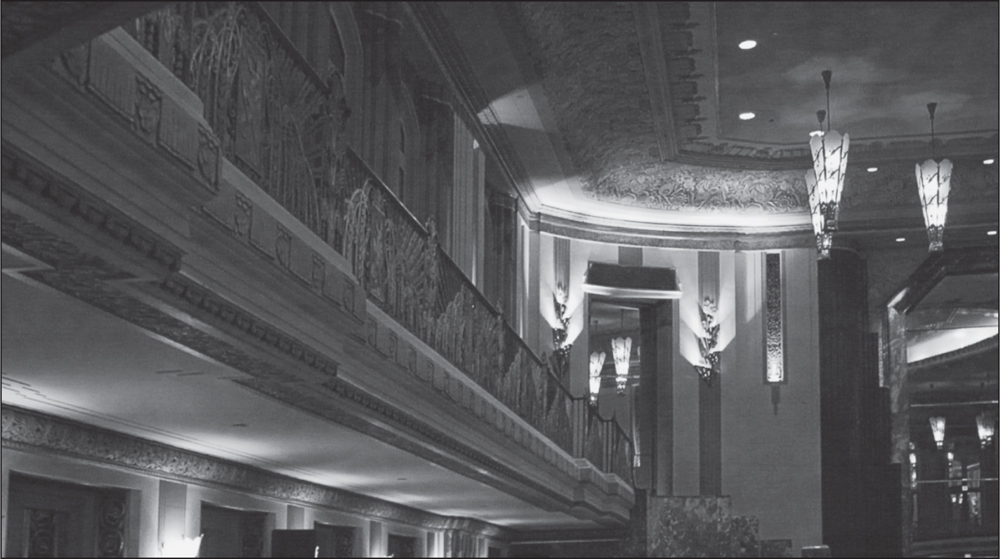
One of the most famous ballrooms is the renowned Hall of Mirrors. While the room is breathtaking, one usually does not notice the ceiling. It was strategically designed by George Unger, creator of New York’s famous Roxy and Beacon Theatres. Upon entering, the ceiling is rather low, like entering a theater. Once inside, the room opens up for the visitor like an old-fashioned movie palace. (Photograph by Jordan Rolfes.)
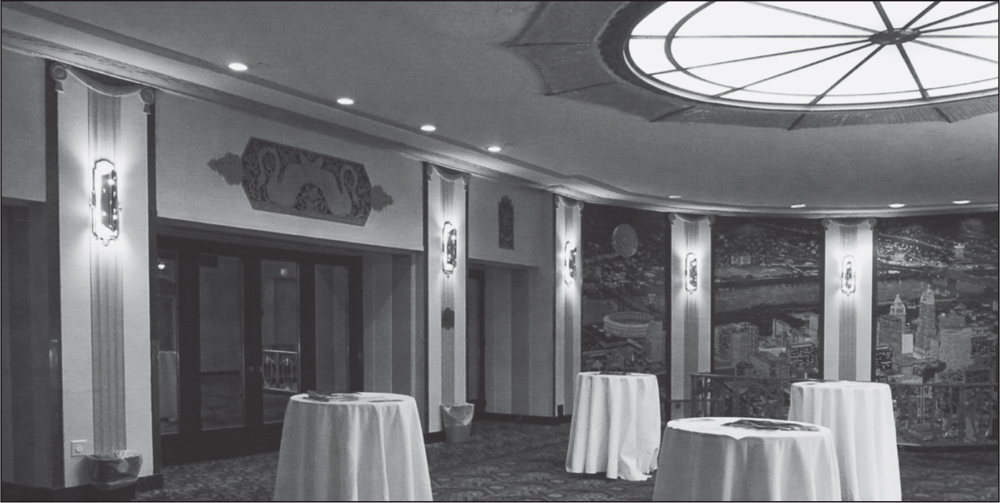
The Netherland is famous not only for the rooms, but also for its meeting spaces. There is 47,000 square feet of room available for gatherings, from the three opulent ballrooms to 28 smaller rooms. Of course, the elegant French Art Deco style is found in even the smallest assembly rooms. (Photograph by Jordan Rolfes.)
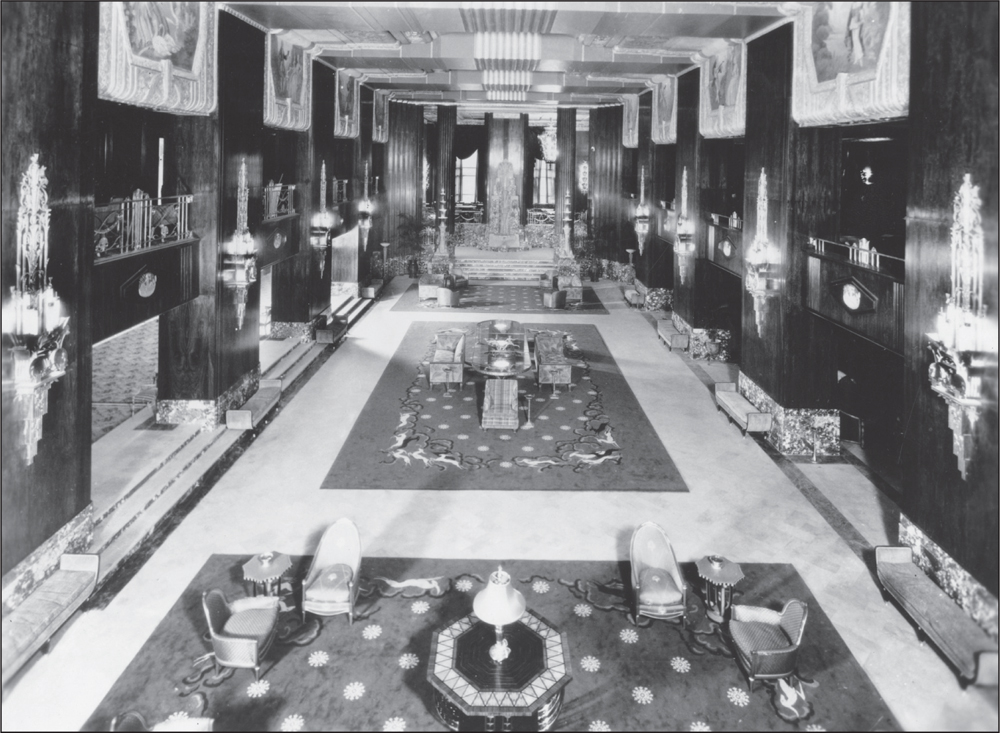
The Netherland was once owned by the Belvedere Hotel chain, whose owners fully appreciated the artistic as well as financial value of the facility. Belevedere’s general manager commented on the acquisition, stating, “We realize that we are the guardians of one of Cincinnati’s most important treasures. This hotel is an icon in the minds of the people of Cincinnati.” (Courtesy of the Ohio Historical Society SA1039AV_B02F1.)
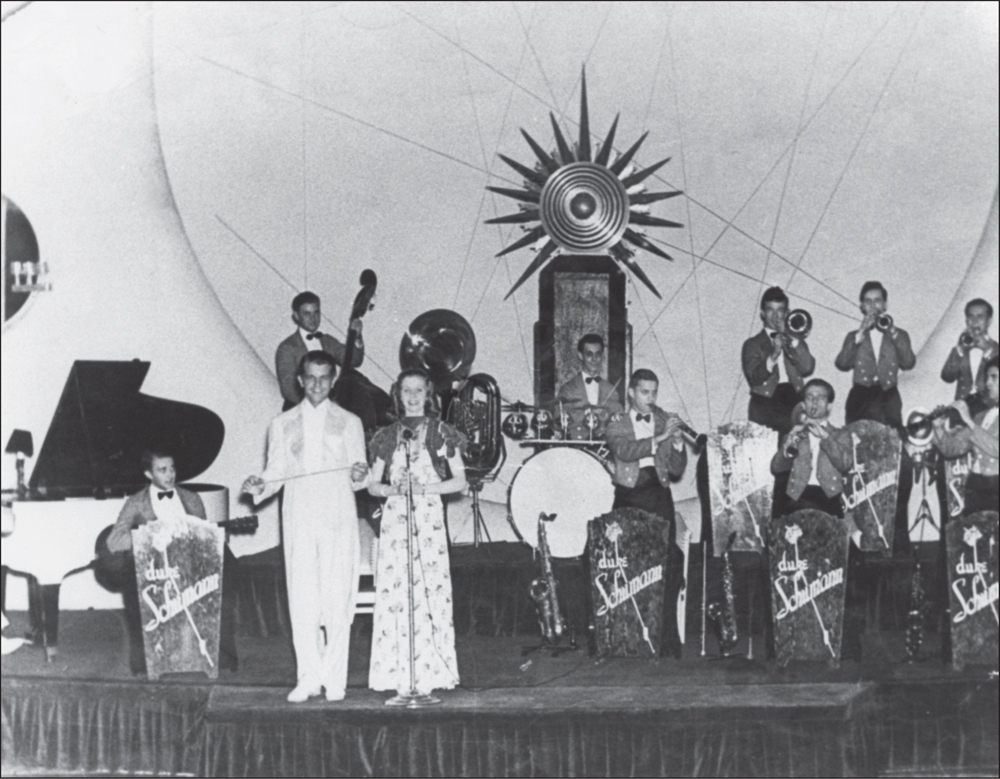
Over the decades, the Netherland has featured many famous acts in its ballrooms, including the premier of a woman who would become a great star. In the late 1930s, a young Cincinnati songstress debuted at the Netherland’s Continental Ballroom (then known as the Pavilion Caprice), although patrons of Charlie Yee’s Shanghai Inn already knew her talent. This 16-year-old singer, Doris Kappelhoff, went on to become one of the most famous singers of her time, singing one of the greatest ballads of the World War II era—“Sentimental Journey.” She later became equally famous as a film star. Of course, by then she had changed her last name, and she is still loved as the singer and actress Doris Day. (Courtesy of the Hilton Netherland Plaza.)
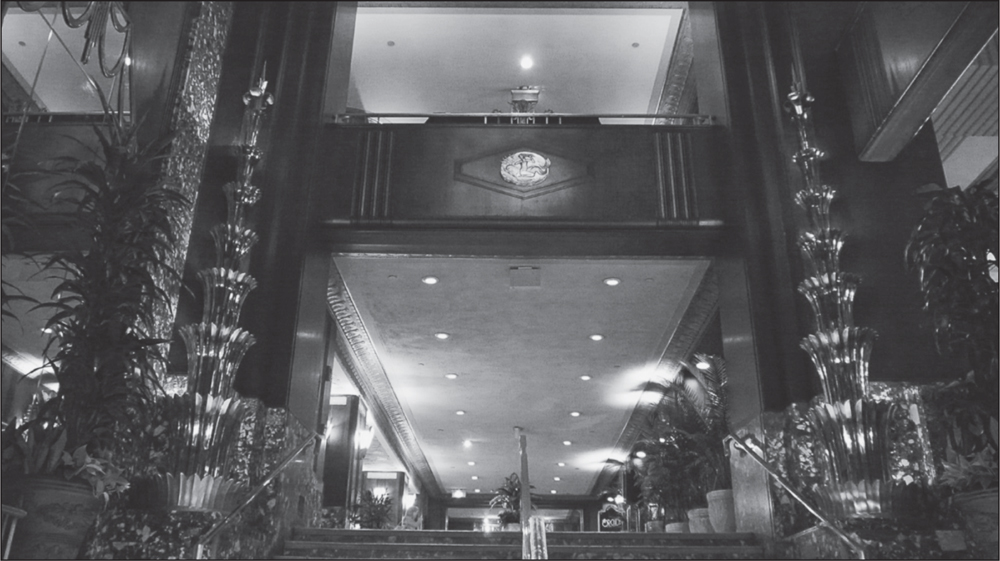
Defying business trends, the Netherland opened for business in 1931, the early days of the Great Depression. Despite the odds being against it, the hotel quickly became a prestigious destination for visitors. The tradition continues today as guests are cared for by a massive staff of 350 employees. (Photograph by Jordan Rolfes.)
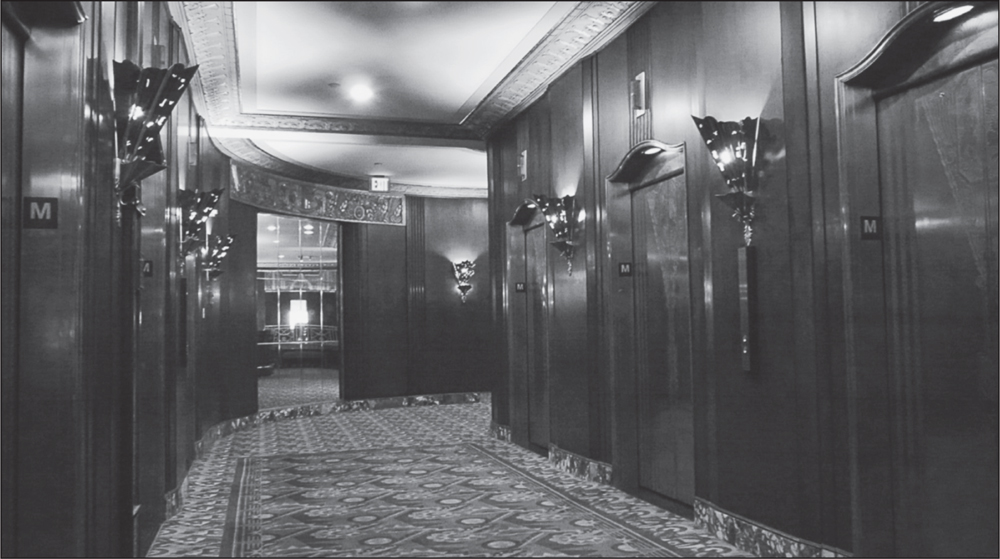
Every great hotel has at least one ghost story. People have reported seeing a “woman in green” in the hotel, particularly in the Hall of Mirrors, and sometimes even in the lobby. The story is that her husband was one of the men working on the Carew Tower in 1930 who died in an accident. The ghost is supposedly his wife searching for him. (Photograph by Jordan Rolfes.)
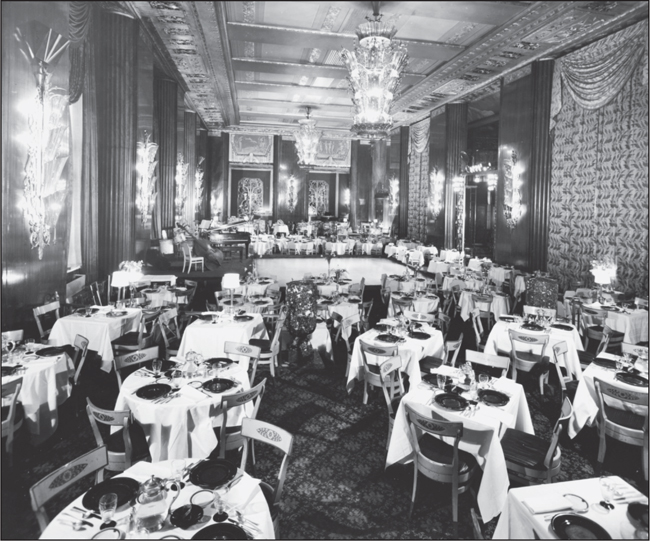
Notice the ice-skating rink in the center of this ballroom. Entertainment has always been at this location in the heart of downtown Cincinnati. When the French Circus closed, the Palace Varieties was located here, providing the public with games, comedians, acrobats, and gambling. Later, the Netherland continued the tradition by offering the public ice-skating shows. (Courtesy of the Hilton Netherland Plaza.)
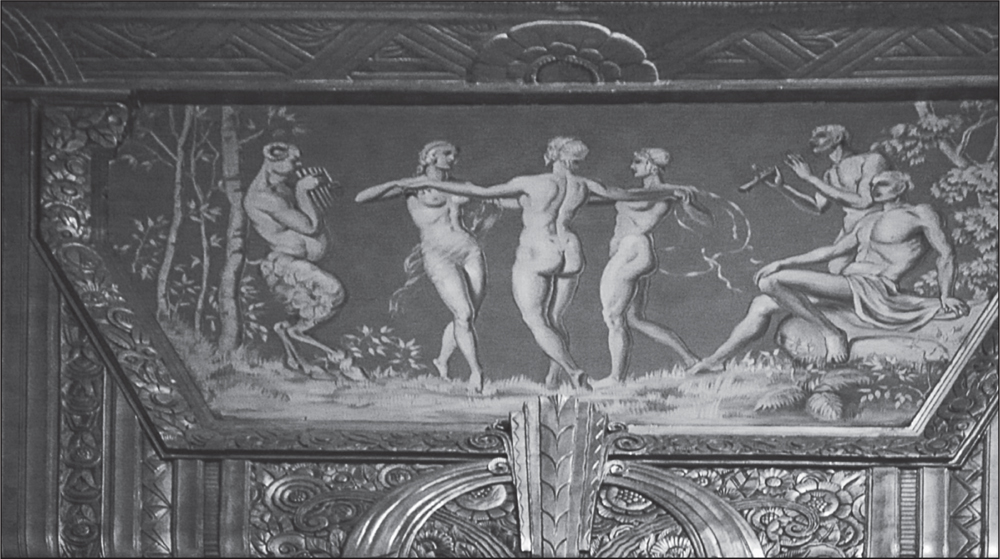
While Cincinnati is famous for being a city of German immigrants, the Netherland receives its artistic inspiration from France. In May 2002, this grand hotel in the French Art Deco style hosted dignitaries from the French-American Trade Council. At this gathering, Cincinnati was granted the new status of being an associate member of the French-American Chamber of Commerce. (Photograph by Jordan Rolfes.)
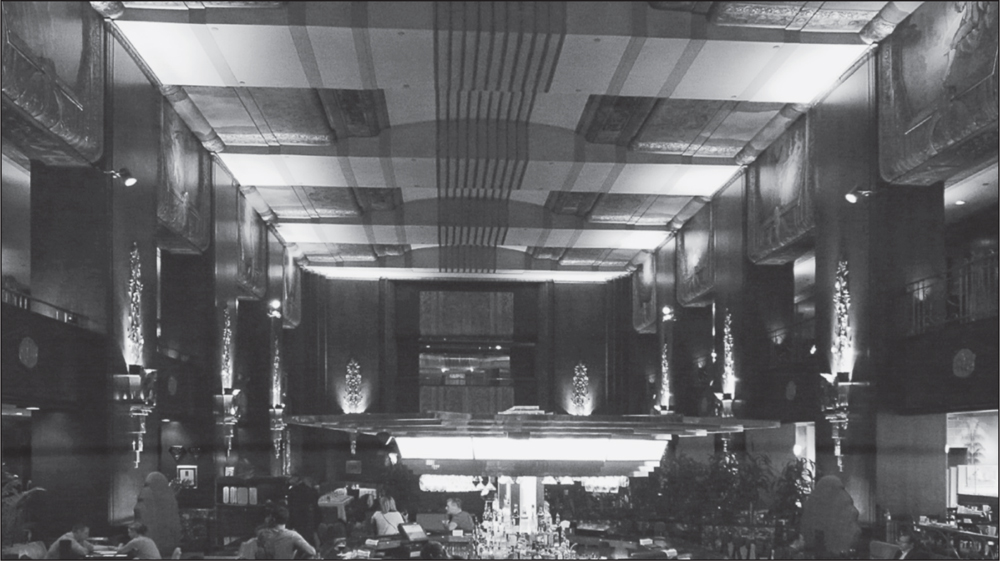
In 1934, Maj. G.S. Black, director of London’s prestigious Grosvenor Hotel, toured the world to see what other luxury hotels had to offer. His visit to the Netherland Plaza astonished him. His young niece Eileen Rodgers was even more impressed. Proclaiming that they didn’t have anything like this in London, she spent the entire day sitting and looking out of the window at the city below. (Photograph by Jordan Rolfes.)
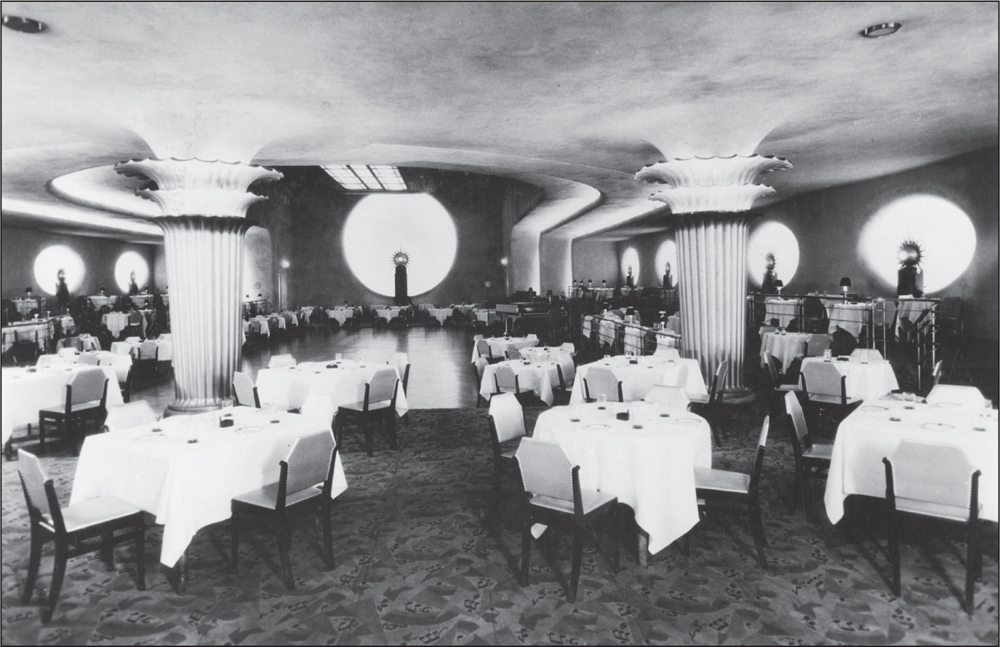
The first guests at the early Netherland had their choice of six different restaurants to dine in, and no less than 26 private dining rooms were available for those who desired privacy. A wedding chapel was conveniently located right next to a ballroom, thus allowing the wedding party to move on with the important business of the reception without delay. (Courtesy of the Ohio Historical Society SA1039AV_B02F14_008_1.)
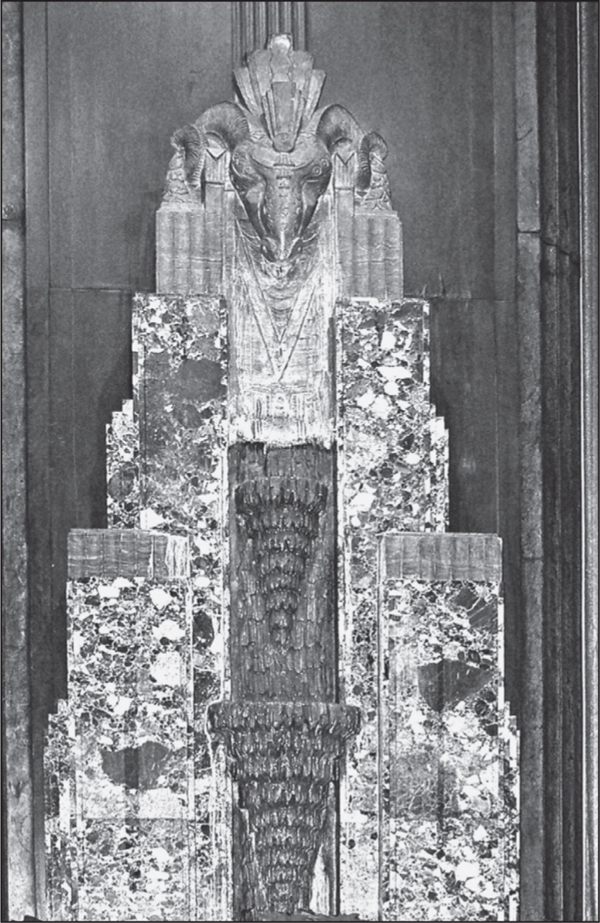
Mythological and classical images are found throughout the Netherland. In Orchids Restaurant in Palm Court, the meals are served amidst Rookwood fountains and murals of a Mediterranean countryside. Diners are watched over by this stunning Art Deco depiction of a goat that is reminiscent of the mythical Golden Fleece. (Photograph by Doug Weise.)
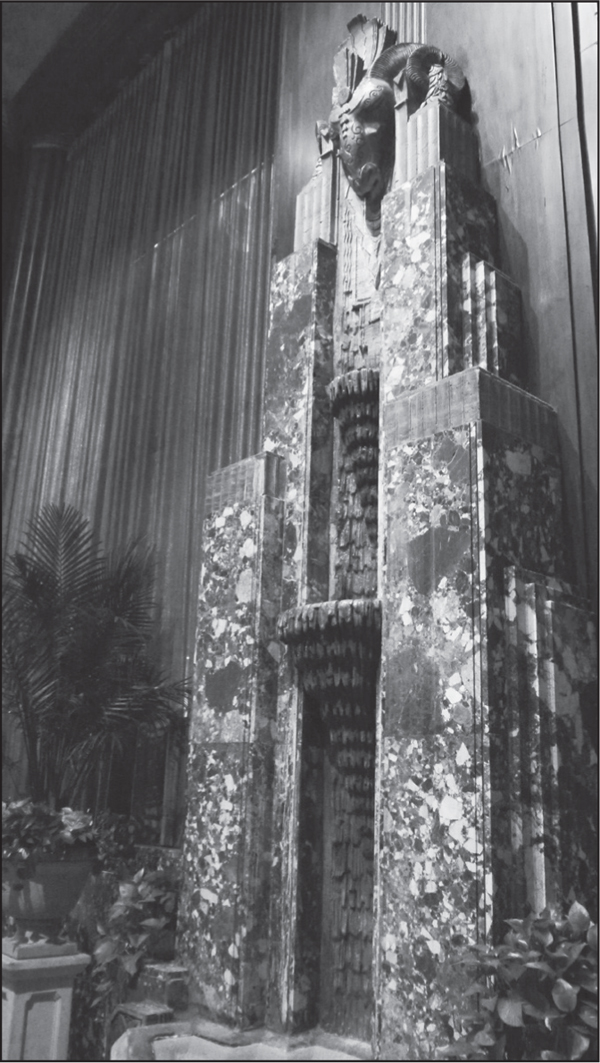
While the Palm Court may battle with a few other prestigious restaurants as to who exactly has the most extensive wine list, there is no doubt as to who has the freshest honey. Fanatic about quality, the Netherland receives its honey from a very local source—its own roof. Tucked away on the sixth floor roof are two beehives. (Photograph by Jordan Rolfes.)
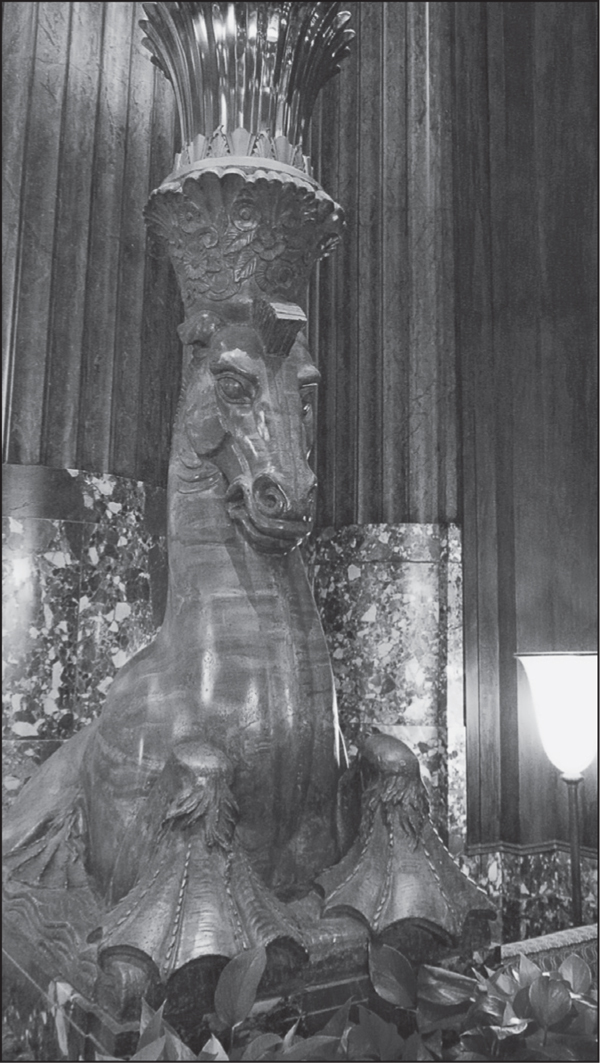
There is a curious irony to this Modernist statue of a mythical sea horse found in Palm Court. The hippocampus, or sea horse, is reminiscent of the symbol of the zodiac sign Capricorn, charging and ambitious with its roots in the water. Cincinnati was born when the first permanent settlers landed at Yeatman’s Cove on December 28, 1788, thus making the city of Cincinnati a Capricorn. (Photograph by Jordan Rolfes.)
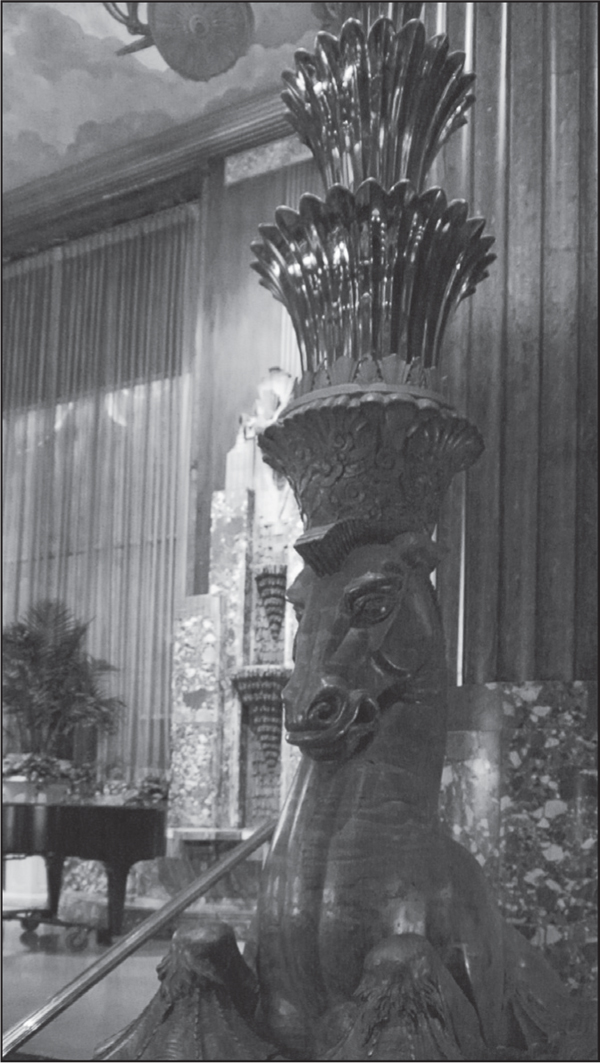
For a short time, the Netherland was known as the Omni Netherland. It was part of the Dunfey Hotels Corporation, a company at one time owned by Aer Lingus airline. The company was founded in 1958 by the Dunfey brothers of New England. (Photograph by Jordan Rolfes.)
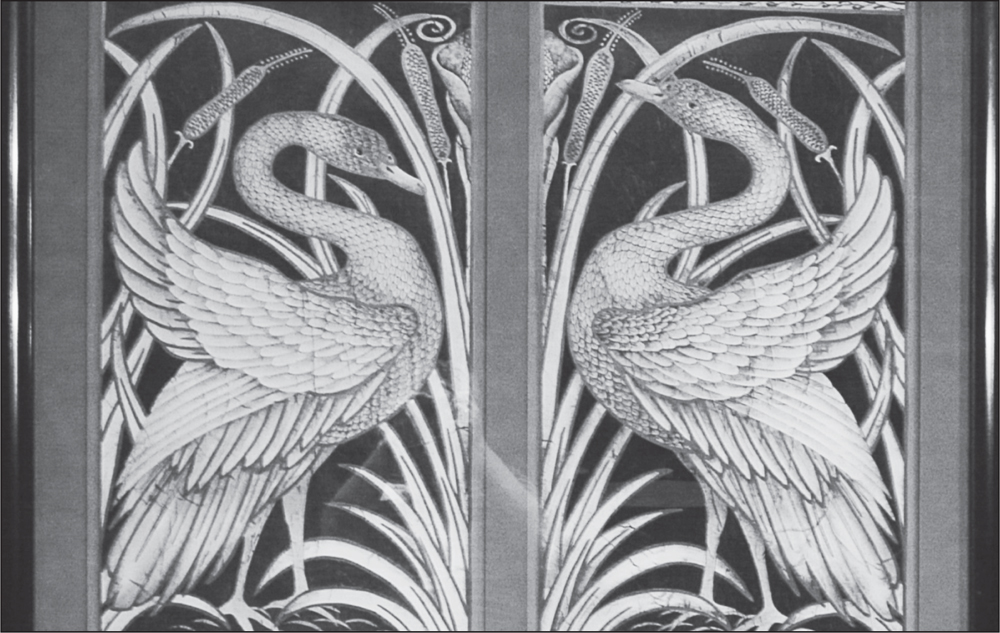
The register of the Netherland has the signatures of presidents such as Truman, Eisenhower, and Reagan. One can also find such Hollywood notables as actress Margaret Whiting, along with Cary Grant, Anthony Quinn, and the Mills Brothers. Cowboy singer and actor Gene Autry was particularly fond of the bar. He spent every night in it during his five-day run in the city. (Photograph by Jordan Rolfes.)
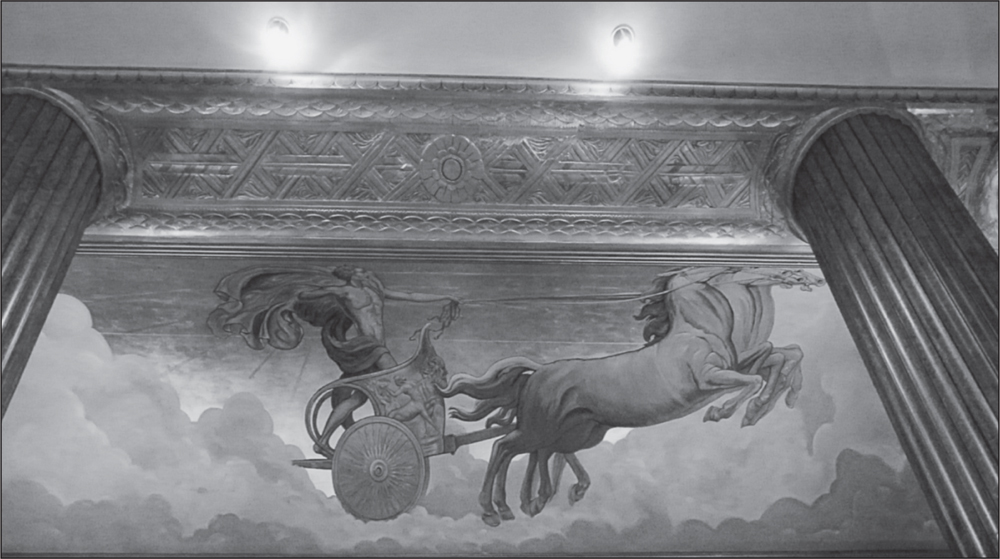
Besides presidents, the Netherland has hosted kings and queens. Queen Wilhelmina of the Netherlands was a guest. The king was none other than Elvis Presley. He requested a very well-done burger. The confused chef, wishing to please his guest, reluctantly put the burger into a deep fryer. This obviously worked as the King later walked in to personally thank the chef for his great creation. (Photograph by Jordan Rolfes.)
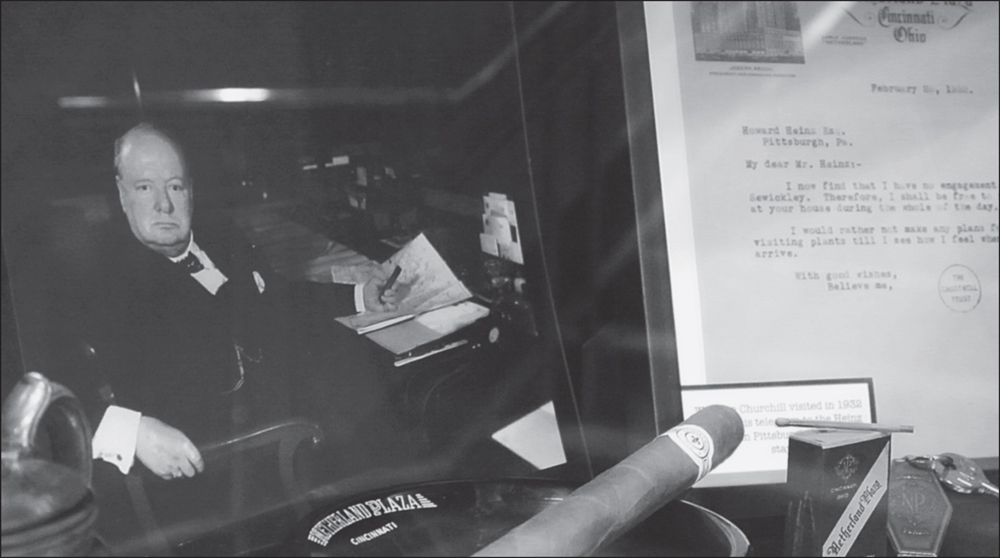
One of the favorite stories from the Netherland, so popular that it is even enshrined in the hotel’s display case in the lobby, concerns Winston Churchill’s 1932 visit. In the midst of the tour of the suite, he suddenly rushed from the bathroom and grabbed a telephone in utter panic. The manager giving the tour was frightened that some world crisis had erupted and wondered if he should discreetly leave. In truth, Churchill had telephoned his decorator in Chartwell, England, telling him to stop work on the bathroom. He was so enamored by the Art Deco design and color tiles of the bathroom that he requested the plans. He later had his own home’s bathroom remodeled to Netherland standards. (Photograph by Jordan Rolfes.)
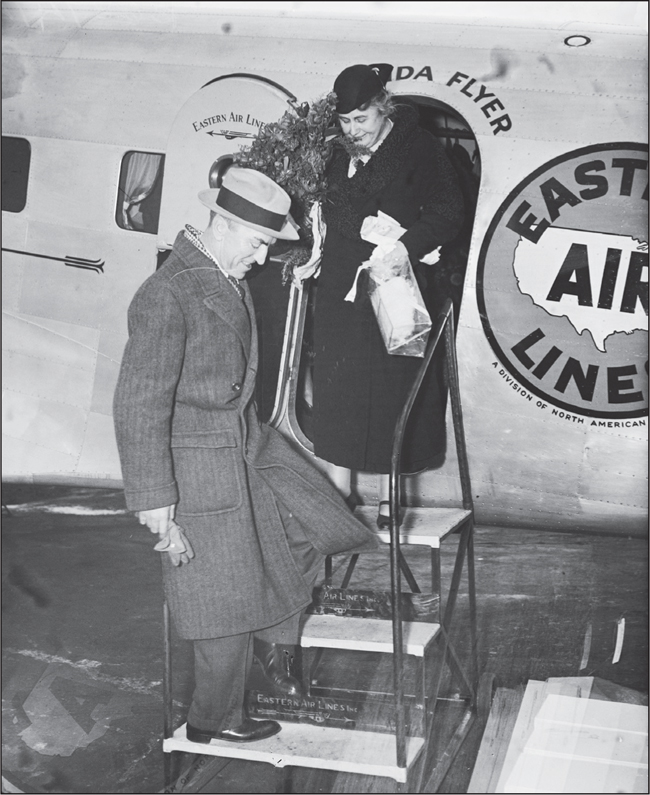
During World War II, the Netherland’s meeting rooms were often used for drives to sell war bonds. In 1945, this man, Capt. Eddie Rickenbacker (shown here with Edith [Mrs. Woodrow] Wilson), was one of the speakers. He fought against the Red Baron, Manfred von Richthofen, in World War I and then was forced down in the Pacific during World War II, obliging him to spend 20 days in a life raft. (Library of Congress LC-DIG-hec-38223.)
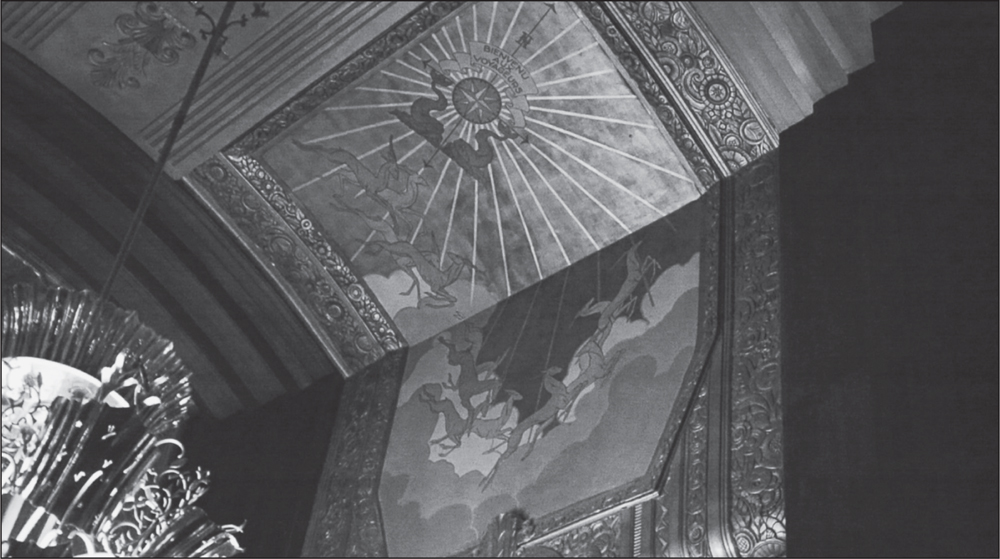
Among the notable events at the hotel was a bizarre experience with First Lady Eleanor Roosevelt. There was a heated argument in the lobby when, not wishing to live off of the taxpayer’s dime, she absolutely refused to leave the hotel until she had personally paid the bill with her own money. (Photograph by Jordan Rolfes.)
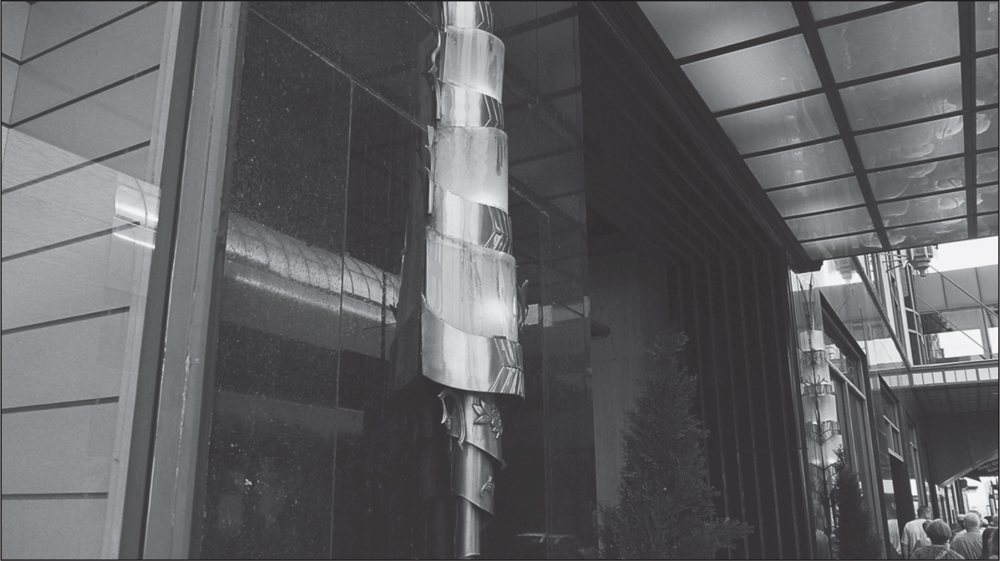
This street scene outside of the Netherland was once a concert venue. In the 1930s, crooner Bing Crosby’s presence in the hotel nearly caused a riot. Rather than accepting the offer of sneaking out through a back door, he gave his fans an impromptu concert while standing on the back of his convertible just outside of the hotel. There was, understandably, quite a traffic jam. (Photograph by Jordan Rolfes.)
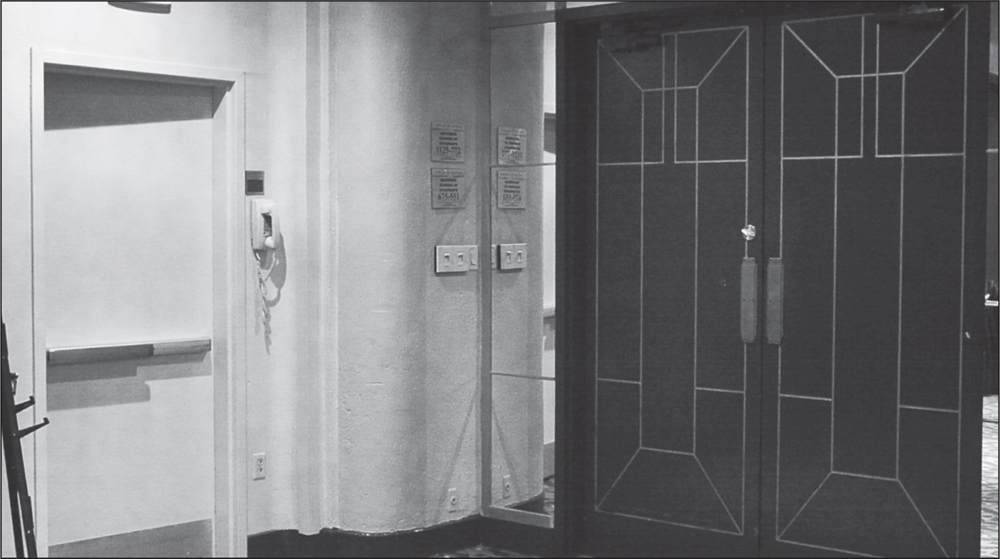
By 1981, even the magnificent Netherland showed signs of age. On Christmas of 1981, the hotel was closed for two years to restore it to its original splendor. In the 1960s, a foolish attempt to modernize brought in decorations that were completely out of place with the French Art Deco theme. These were discarded to return the hotel to its previous splendor. (Photograph by Jordan Rolfes.)
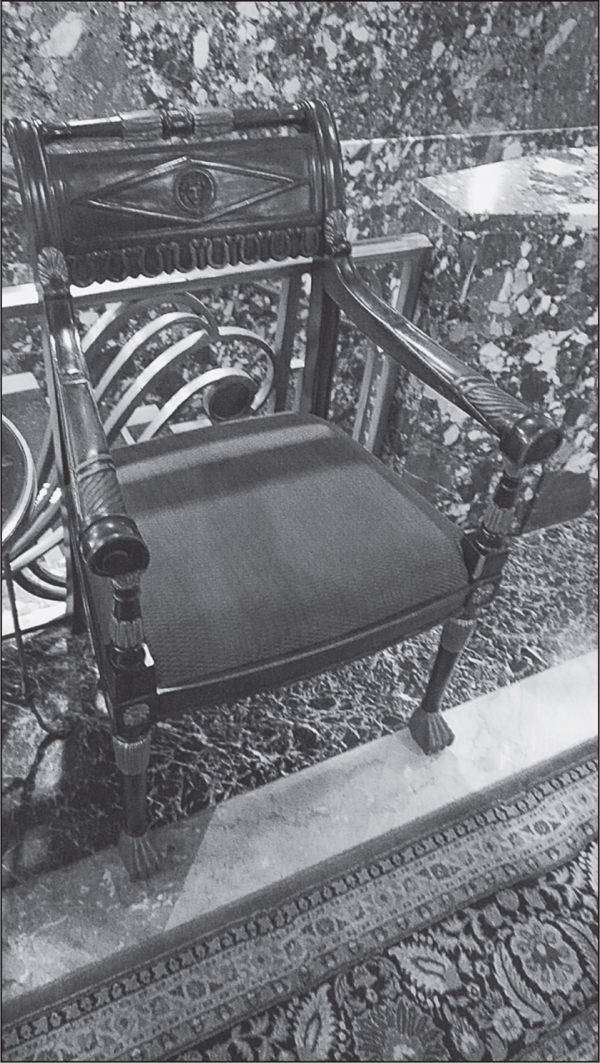
In the 1960s, some Art Deco facilities decided to modernize, obliterating architectural treasures in an effort to keep up with the times. Sadly, even the Netherland succumbed to this. During the restoration work, the massive chandelier in the Hall of Mirrors was accidentally destroyed. (Photograph by Jordan Rolfes.)
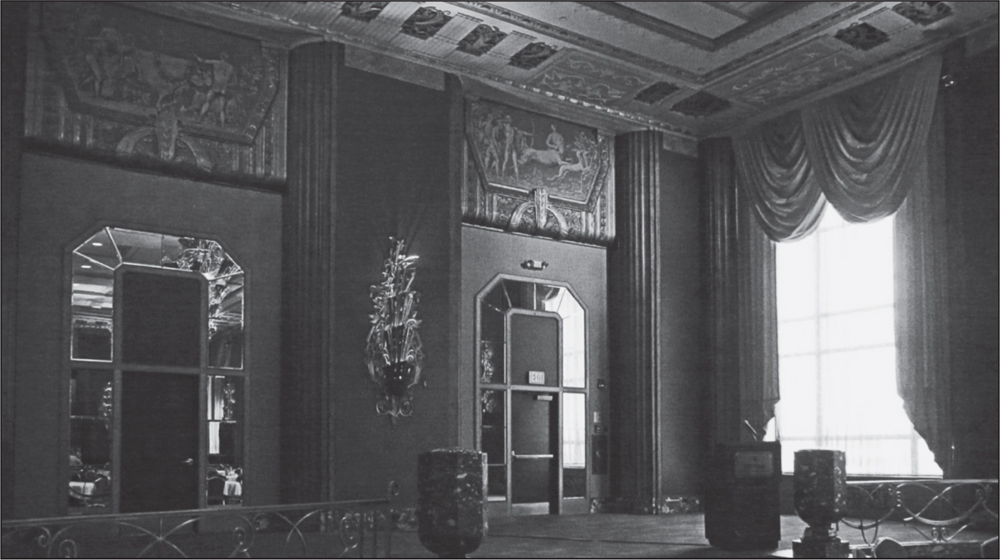
A magnificent jewel must have light to shine. Over the decades, a number of windows had been painted over or covered up, creating a somber, almost gloomy setting. By the grand reopening in October 1983, guests were delighted to see that sunlight was now pouring in, illuminating the restored French Art Deco interior. (Photograph by Jordan Rolfes.)
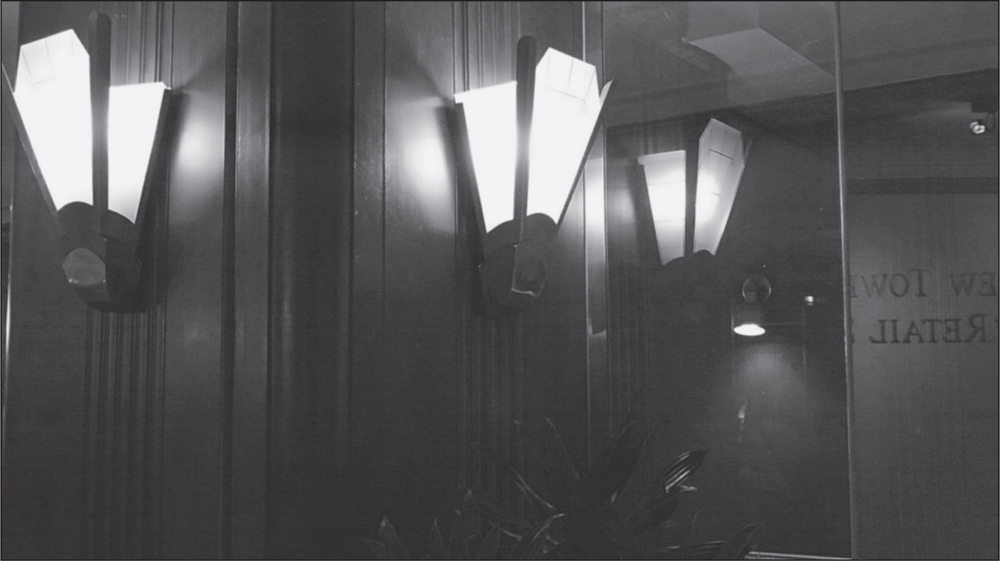
Small details such as the lighting fixtures make sure that wherever guests turn their eyes in the Netherland, they are in the midst of Art Deco elegance. The lighting was revolutionary when the hotel was built, for unlike other illumination in use at the time, the bulbs were concealed. (Photograph by Jordan Rolfes.)
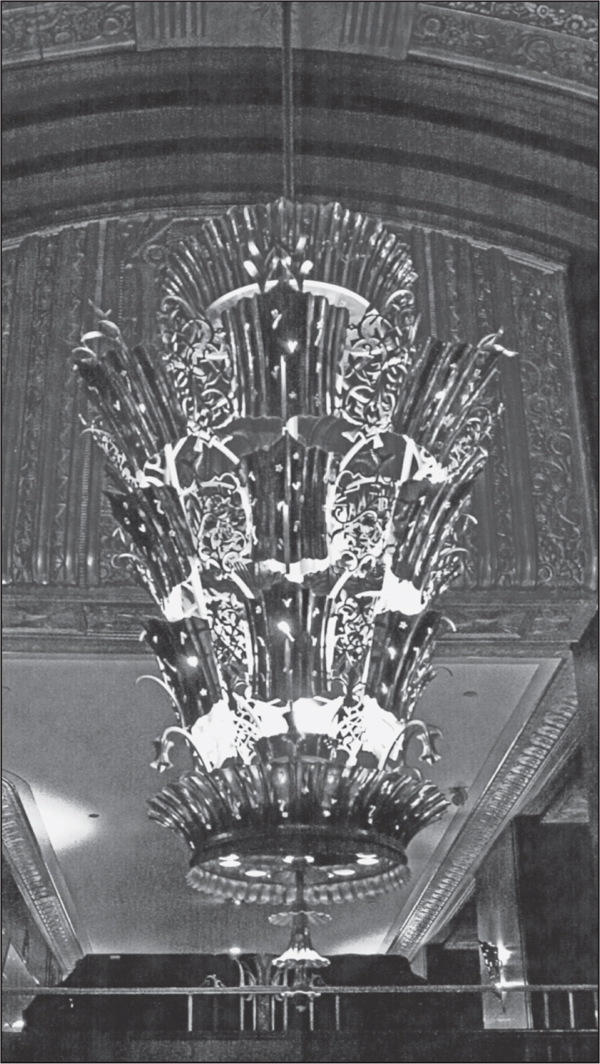
When the hotel was being restored in 1981, the ornate light fixtures found throughout the hotel were not merely cleaned and polished. A professional lighting consultant was called in to supervise this part of the restoration and to assure that the renovated hotel was bright and inviting. (Photograph by Jordan Rolfes.)
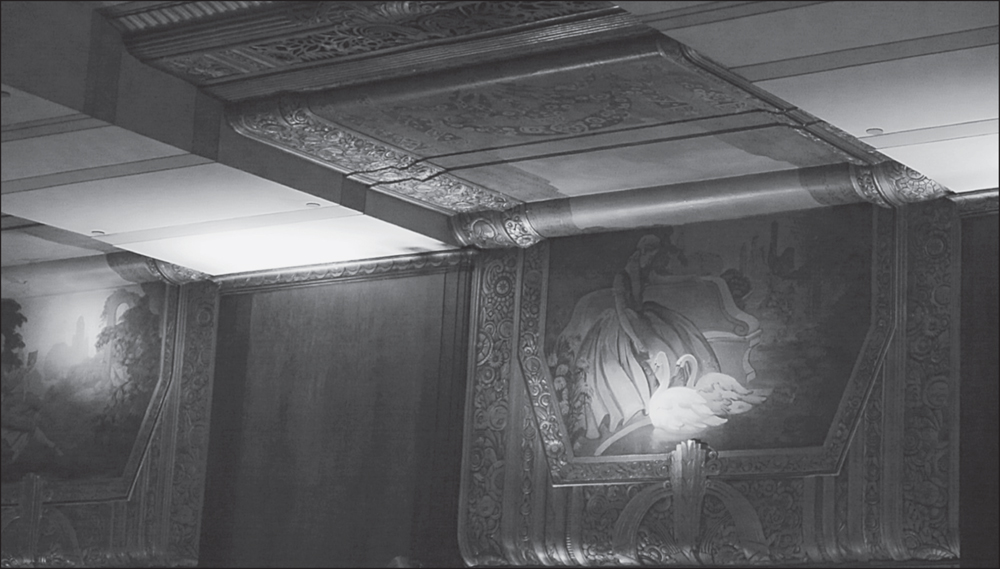
In 1995, nearly 200 people braved a February snowstorm to watch one of the strangest events ever held in the Netherland: the trial of Hamlet. The melancholy Dane was put on trial to see if he was indeed “full of artless jealousy” and guilty of the murder of Polonius. The mock trial featured news anchorman and later mayor of Cincinnati Charles Luken as Hamlet (wearing tights). The mock trial even featured the well-known Hamilton County sheriff Simon Leis presenting evidence. After the presentation, the jury dutifully retired to consider the evidence. The trial ended with a hung jury, which, considering Shakespeare’s indecisive hero, fit rather nicely. This is to be expected when a person has none other than the renowned Stan Chesley acting as a defense attorney. (Photograph by Jordan Rolfes.)
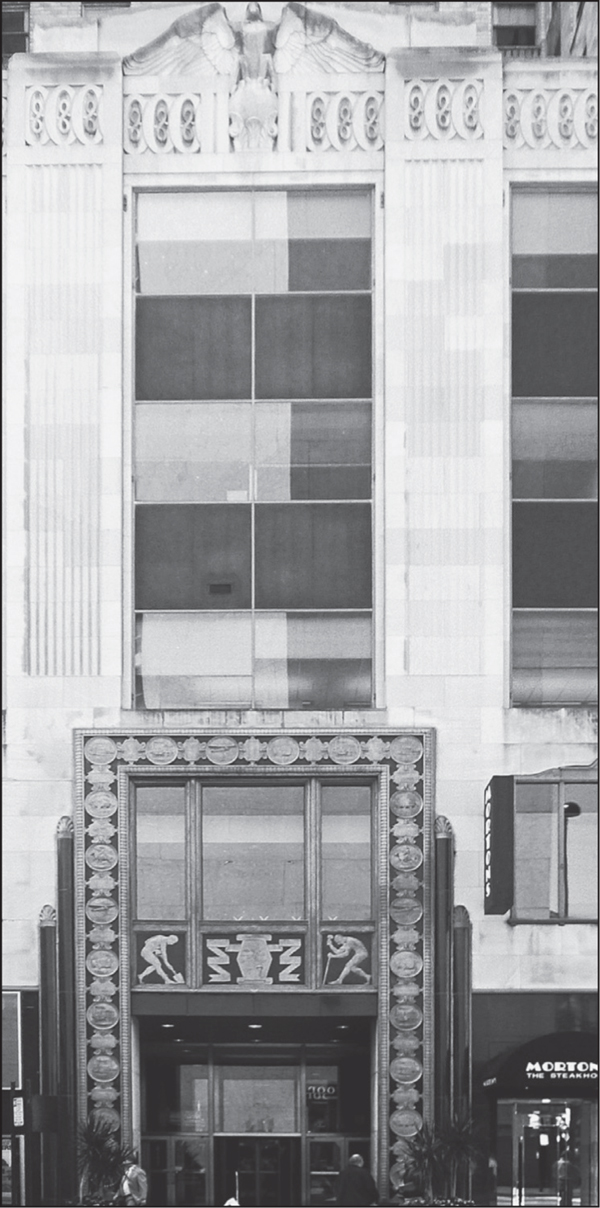
Hilton Hotels was in negotiations to purchase the Netherland for two years. At the time that the deal was put into place, Cincinnati was suffering from the lowest hotel occupancy in its modern history, partially due to adverse publicity from a civil disturbance in 2001. Hilton, however, believed in both Cincinnati and the prestige of the Netherland and purchased the landmark hotel. (Photograph by Jordan Rolfes.)
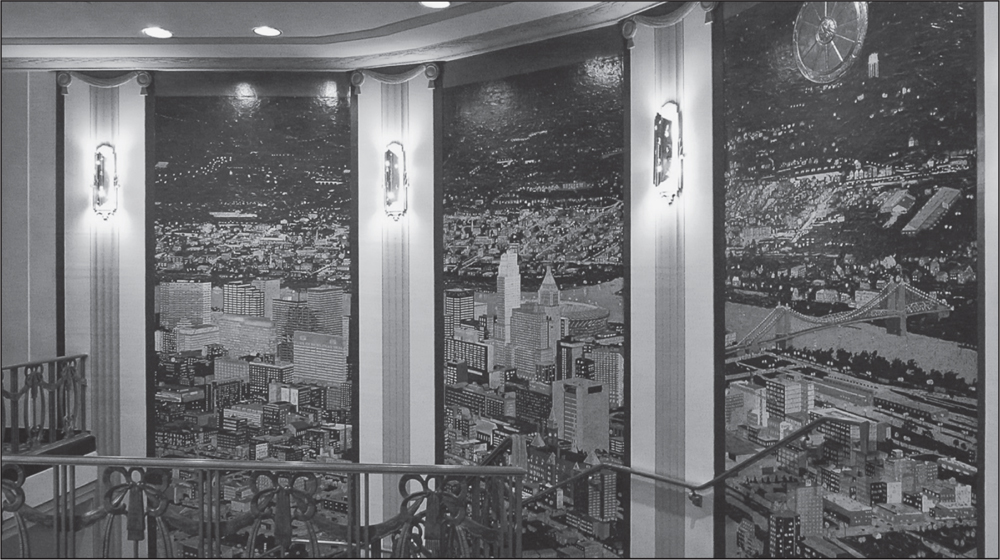
In 2002, the Netherland began the new year with a new owner, Hilton Hotels. The Hilton hotel chain was started in 1919 by Conrad Hilton with one hotel in Cisco, Texas. Over the decades, it grew to become one of the largest, and certainly most prestigious, hotel chains in the world, spanning more than 70 countries. (Photograph by Jordan Rolfes.)
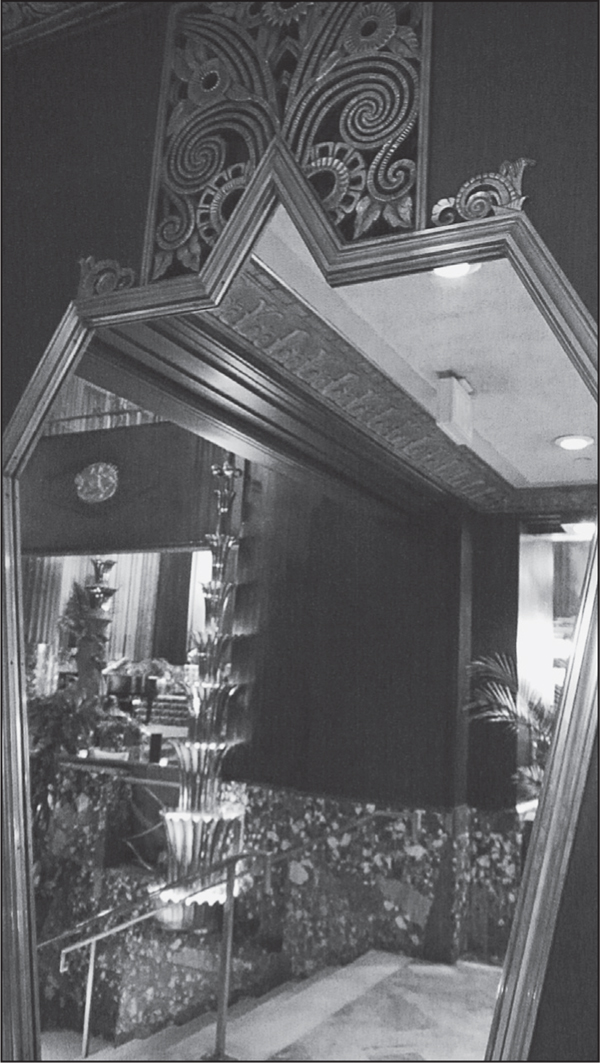
In 2002, the Netherland adopted the celebrated Hilton name as part of its own. Cincinnati’s mayor, Charlie Luken, who years before had played the role of Hamlet in a mock trial at the Netherland, declared, “With the reuniting of one of this city’s valued landmark hotels with the Hilton brand, we are excited about the additional national and international visibility this provides for our city.” (Photograph by Jordan Rolfes.)

Upon its opening in 1931, the Netherland Plaza enjoyed the distinction of being the largest modern luxury hotel in the nation. At that time, the cost of a single room started at $3, a suite was the astronomical sum of $11. Business travelers’ suits could be cleaned and pressed right on the premises using a process known as “odorless cleaning,” in other words, dry cleaning. (Photograph by Jordan Rolfes.)
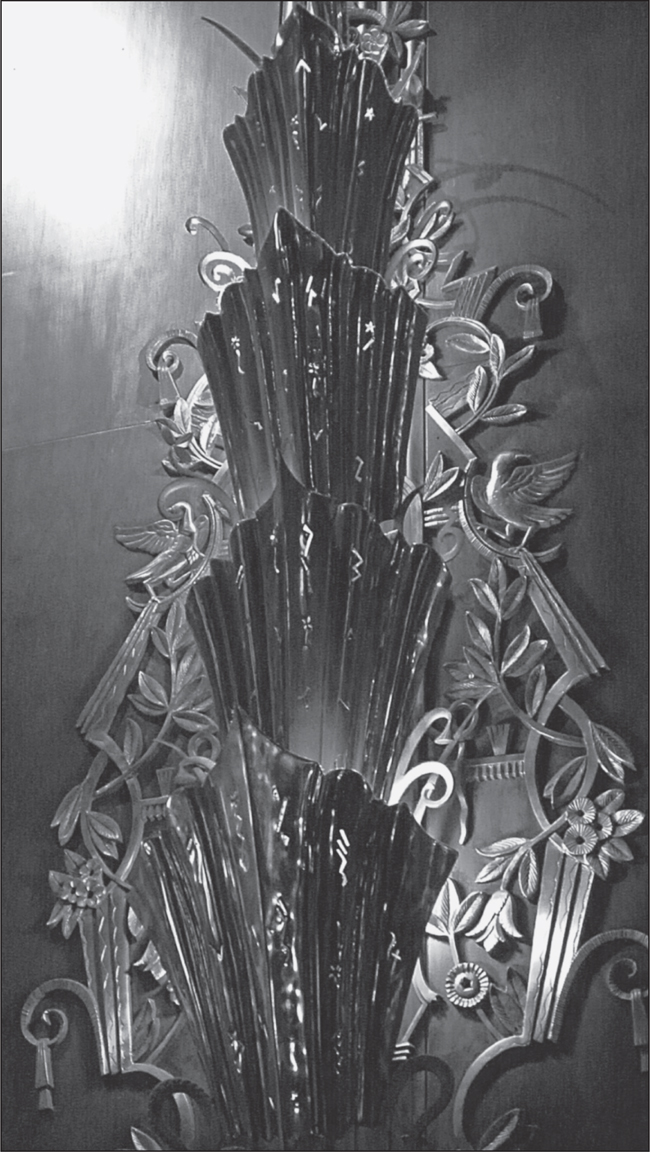
The Netherland has won many awards over the years. In 2001, the coveted Gold Key award was given by Meetings & Conventions Magazine. The hotel has won this award not just once, but four times, an achievement not reached by any other hotel in Ohio, Kentucky, Indiana, or Michigan. The competition is steep, as only 169 hotels in the United States and 35 in foreign countries take the prize. Besides the Golden Key, the Hilton Netherland Plaza has gathered numerous other honors. In 1985, it was placed in the list of the National Register of Historic Places, and is designated as a National Historic Landmark. It received the Preservation Honor Award for its remodeling in the 1980s, going far beyond the standards set to receive this honor. In 1989, it was placed on the list of Historic Hotels of America. (Photograph by Jordan Rolfes.)
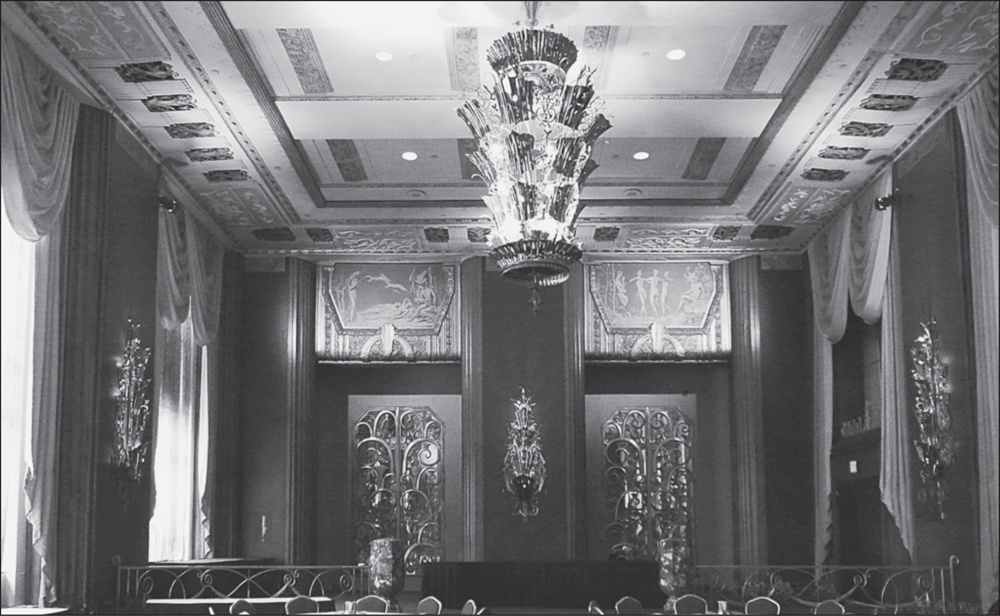
Shown here is one last look at the Continental Room and one last story. The ice-skating rink is gone now, but the elegance remains. The walls of this room are decorated with murals denoting the four seasons. In 1940, a young struggling actor named Dan Tobin hosted a small party in this room to celebrate his new role in the stage production of The Philadelphia Story. To his surprise, although he was a new actor with very little money to spend on such luxuries, waiters kept bringing expensive champagne. Tobin became worried that he would not be able to afford this extravagance and asked the waiter. With a smile he replied that the bubbly was provided as a gift from the star of the production, Katharine Hepburn. (Photograph by Jordan Rolfes.)







































